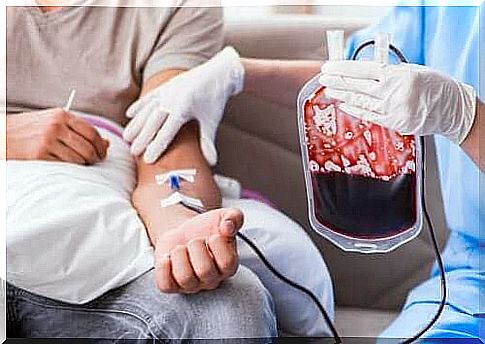Blood Transfusions – Purpose And Procedure

Blood transfusions are one of the mainstays of modern medicine, as this measure saves many lives by compensating for blood lost as a result of an injury, for example.
It is known that the first blood transfusions were made in the 17th century, but it was not until the 20th century that researchers identified different blood types. Prior to this, blood transfusions could be life-threatening.
Blood type is the classification of blood according to the characteristics of blood cells and their serum. When a person receives blood from a blood group other than his own, potentially fatal rejection reactions occur.
This insight was the key to the development of blood transfusions, and now they are a safe and effective procedure. In today’s article, we’ll talk about everything you need about blood transfusions.
Blood transfusions as a procedure
Blood transfusions are a routine procedure in medicine. In them, the patient receives blood, or some of its derivatives, from another person. Blood contains the following components:
- Red blood cells, which are responsible for transporting oxygen and helping to remove waste products.
- White blood cells that help the body fight infections.
- Platelets associated with blood clotting.
- Plasma, which is the liquid part of the blood.
Blood donated by other people is needed to make a blood transfusion. The donor is, of course, a volunteer who does not receive any compensation for donating blood.
Blood donation as a procedure

Blood donation is a very simple procedure that can help save lives. The person donating blood must be healthy, weigh more than 50 pounds, and have no anemia or other blood problems.
Blood can be donated by applying for a blood donation service or by utilizing various health campaigns. These are usually held in public spaces such as schools, universities and town halls.
In blood donation, sit with your arm outstretched over the handle. The person in charge measures blood pressure and ensures that the donor is in optimal condition to donate blood. A tightening bandage is then tied around the arm.
Once the tourniquet is in place, the lab technician can easily find the right vessel and insert a needle into it. The needle must be sterile and the skin should be cleansed before injection. Once the needle is inserted into the skin, the blood begins to fill about 5 dl sachets.
The procedure is simpler than it seems and will not hurt. It usually takes about ten minutes. After the donation, the person in charge gives the donor a snack to help him recover. Blood donation rarely leads to complications.
Some studies claim that people donate about 92 million units of blood each year. However, an additional 22 million units of blood are still needed worldwide. We should all boldly donate blood.
What is the purpose of blood transfusions?
Blood transfusions are used to treat patients who are deficient in any component of the blood. This may be the case, for example, if the bone marrow does not produce blood cells.
Blood transfusion is used to treat hemophilia so that the patient’s clotting process takes place properly. Other causes of blood transfusions include:
- After bleeding to compensate for the amount of blood lost
- Major surgeries with a lot of blood loss, such as transplants and damage repair
- Chronic anemia
- Patients undergoing chemotherapy
What are the risks of blood transfusions?
In general, a blood transfusion is a safe procedure. Nevertheless, complications can occur, although the risk is low. The most common complications are mild allergic reactions that cause hives and fever.
It is also good to know that blood transfusions can lead to infections, although laboratory technicians test blood donors to rule out possible infectious infections such as HIV and hepatitis.
Unfortunately, blood transfusions can sometimes lead to immune reactions. This is because the immune system attacks foreign transplanted red blood cells.
Summary
Blood transfusion is a procedure that can save many lives. For this reason, it is important to know that all healthy people can donate blood. One day, you may even need blood from a donor yourself.









